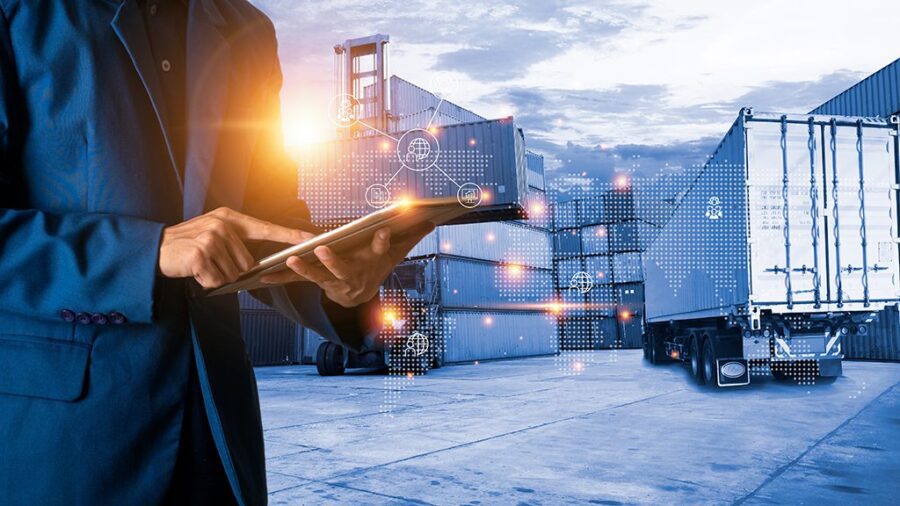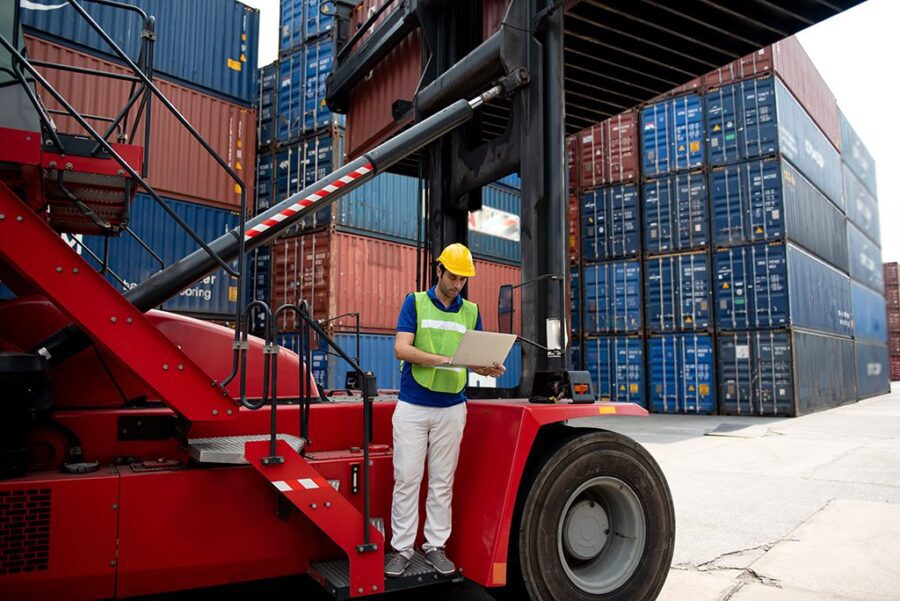
Ports and ships are the most important node, which altogether comprises the global supply chain’s intricate and complex nexus. About 90 percent of the good travels by ship. Almost 60 percent of global oil trade is carried via sea, while the commodity constitutes 30 percent of all maritime cargo (Sinews of War and Trade, Laleh Khalili, 2020). Ports are the receivers of goods from around the world, and it is the place where your latest Amazon purchase will be put into a container, further leading to truckers who will deliver your products to a warehouse – the penultimate destination, from where it is picked up by a driver and delivered at your doorstep. As with everything else, I wanted to look at how technology reshapes this significant part of the global trading system.

International trade grew to a record $28.5 trillion in 2021, according to an estimate by UNCTAD – a 25 percent increase from 2020. Recently, Covid-19 Stop-and-Go maneuvers have highlighted the difficulties that modern ports face. It includes handling an overwhelming amount of goods, their corresponding paperwork, and other administrative tasks, congestion, delays, no coordination between terminal operators, and most importantly, the dependency on manpower. In addition to these, environmental issues have taken the front seat.

However, technology promises, if not completely resolved, at least to help provide the most optimal solutions to these pressing problems.
One of these is the Internet of Things (IoT) which can play a vital role in digitizing delivery procedures and cargo monitoring. This is being used at the port of Hamburg. It turned itself into a “smart port” by using a similar technology that now monitors all the assets, such as cranes, warehouses, and roads, using sensors and geo-referencing technologies. High Bay Storage (HBS) system is another tool that makes handling container easy. It is an automated container handling software that can stack containers reaching 11 floors high, increasing the capacity of a conventional yard three times. Blockchain is another big thing that promises to digitize our supply chains due to its focus on real-time communication. Port of Antwerp did a pilot project in 2017 using this technology.
The Port of Virginia, the U.S.’ most automated port, registered its most productive year ever last year, as it handled a 25.2 percent increase in cargo volume. The U.S. currently has four ports that shelter automated terminals, including Los Angeles and Long Beach ones (both handle around 42 percent of all containerized traffic in the country). The benefits of automation of ports are umpteen from rising productivity up to 35 percent and an expected 20-55 percent fall in operating expenses; Mckinsey envisaged that such developments would usher into an era of what they termed as Port 4.0.

Source: Future of Automated Ports

But despite the evidence of its benefits, such as a complete transformation and automation on a larger scale, it faces many issues. For instance, while fully automated ports show improvements in safety and fewer disruptions, the overall productivity might not surpass that of a conventional one. According to a recently published report by International Transport Forum, no port is fully automated in the true sense. Its location, size, and specialization play a far more important role in performance than automation. It further added about 53 terminals that are automated to different extents, representing only 4 percent of global container terminals.
It is interesting to observe that similar attitudes that led to the Luddite movement are still present. Their concerns are well founded to some extent. Still, the world’s growing complexity will gradually and naturally lead to more automation as it becomes increasingly difficult for humans to keep up with the change and its scale.
Ports are the gateways of global trade. Fed by the ever-growing demand of consumers, their role will grow in the future. But human beings will find a way to deal with that bedazzling scalability – and we so far have done. In 2020, 131 billion parcels were shipped worldwide; in the next six years, this volume is expected to double to more than 266 billion by 2026.

As such, the marriage of technology and our lives is bound to become stronger. Exploring the political economy and socio-cultural effects of such a transition will continue to be a prominent theme of my writings here.

